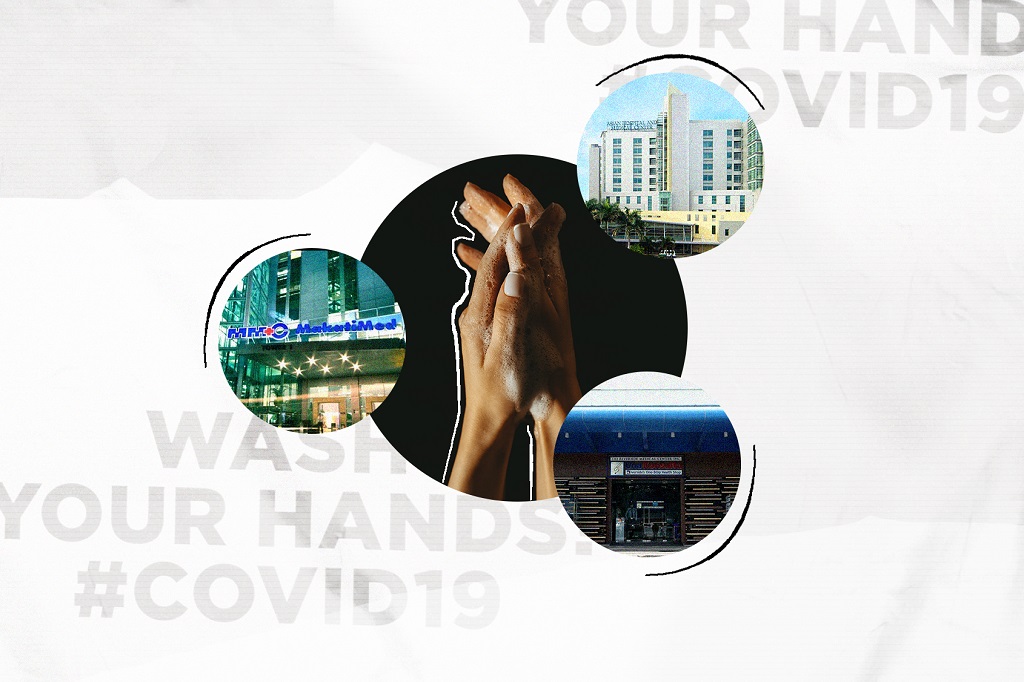Hospitals discuss infection control measures against COVID-19

By Patricia B. Mirasol
Three hospitals, namely Makati Medical Center (MMC), Negros Occidental’s Riverside Medical Center, and Asian Hospital and Medical Center (AHMC) outlined the infection control measures they have put in place during a recent webinar. This, against the backdrop of rising COVID-19 (coronavirus disease 2019) cases in the country.
“Hospitals are probably some of the most COVID-safe places one can go these days,” said Atty. Pilar Nenuca Almira, Chairperson of the Metro Pacific Hospitals COVID crisis management team, in a statement. “If hospitals follow best practices in terms of infection control, zoning, and engineering, they are actually much safer than groceries or malls.”
PREPAREDNESS CHECKLIST
MMC instituted a Preparedness Checklist that includes, among others,
• pre-screening patients before their actual visit
• queuing patients to avoid crowding in the clinics
• triaging patients and their companions
• checking temperatures at all entrances
• physical distancing in common areas such as lobbies
• implementing a strict no mask-no entry policy
• installing hand sanitizer dispensers
• providing personal protective equipment (PPE) for staff
Furthermore, the emergency department (ED) has a separate facility with its own air-handling system for those suspected to have the virus. The main ED also has a separate cold zone (or uncontaminated area) with its own personnel and its own portable HEPA (High-Efficiency Particulate Air) filters.
MAPPING RISK ZONES

Negros Occidental’s Riverside Medical Center, meanwhile, identified and mapped out high-risk zones, including the outpatient department with respiratory infection patients; and moderate-risk zones, including the radiology and laboratory areas.
This classification helps the hospital determine the PPE required in each area, said Dr. Genesis G. Golingan, President and CEO of Riverside Medical Center.
In addition, they also have two separate entrances for clients and employees, two separate floors for COVID and non-COVID patients, two dedicated laboratory extraction and imaging teams, and two separate outpatient clinics to separate those with respiratory illnesses from those without.
A car call service for patients who don’t want to enter the hospital is also available: patients call Riverside to set an appointment for a procedure such as blood extraction. They are then directed to a specific parking area where the procedure is done and informed of their results via website and SMS. Payment is done online.
CONTACTLESS, CASHLESS, AND PAPERLESS
Asian Hospital and Medical Center (AHMC) improved real-time communication with all stakeholders and shifted to contactless, cashless, and paperless services through DigitizAsian, an ecosystem for online and on-site doctor consultations, elective admission (or admissions subject to choice) booking, test appointments, and home care service requests.
One of the biggest challenges for AHMC, according to Dr. Andres M. Licaros, Jr., President and CEO, was reopening the hospital to patients who delayed their treatments due to the quarantine measures. Prior to the pandemic, the Center had been hosting thousands of outpatient treatments a day.
MMC medical director Dr. Saturnino “Bong” Javier, moderator of the webinar, summed up the cornerstone measures against COVID-19 as hand hygiene, physical distancing, and barrier control. “But the most important of all is compliance,” he said. “None of this is meaningful if nobody will comply. This is true for hospitals as it is for communities.”
The webinar, titled “Is Your Hospital Safe: Inpatient and Outpatient Safety in the New Normal,” was organized by the Metro Pacific Hospitals COVID crisis management team.



